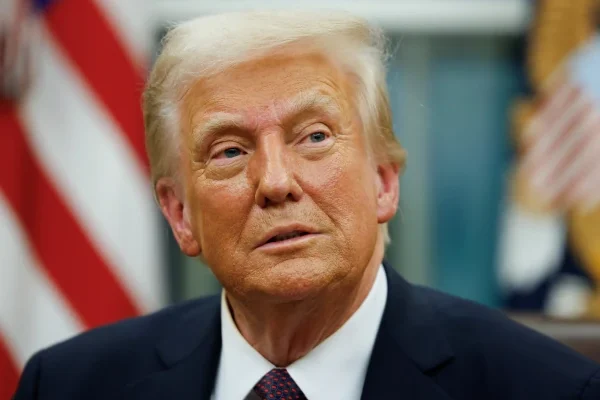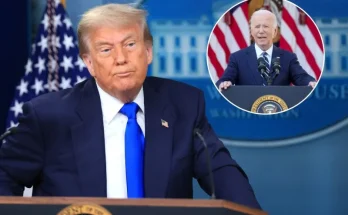A tremor ripples through the world of numbers, a harbinger of a new era: The mercantilist pivot of the United States is shaking up the well-rehearsed choreography of global markets — a reordering of trade is taking shape.
Power politics is defensive politics. Dominant political entities retreat into its embrace when the going gets tough. The U.S. is the hegemon of our time, and it no longer hides from its problems behind the rhetorical fog of moral narratives — now, it’s rolling up its sleeves!
With his tariff offensive, President Donald Trump is tackling an issue the nation has been kicking down the road since the end of the gold standard in 1971 — the gaping chasm of fiscal disaster and trade deficits.
Since the Bretton Woods Conference of 1944, the U.S. has shouldered responsibility for the world’s reserve currency — with all the perks and pitfalls that entails. In the engine room of the global economy, the dollar has been the lubricant ever since, with the U.S. supplying banks and debtors by tolerating a chronically growing trade imbalance — until April 2, 2025, declared “Liberation Day,” the turning point of a grand shift.
Tariff Policy as a Steamroller
The Trump administration didn’t just start waving the flag against this twin deficit a few days ago. Anyone following the Trump campaign since 2023 could see what’s coming: a new trade order, with the U.S. as the architect of international supply chains. And it’s happening with maximum radicalism.
Aggressive tariffs, a weaker dollar, falling interest rates, tax cuts, and deregulation are the vectors of the U.S. government’s battle against an enemy that has seeped into society like a creeping poison: debt.
It’s the expression of a high-time preference, the desire to have things without much effort. Holding the world’s reserve currency cheapens imported consumption, as demand for the dollar seems boundless.
This poison has politics and vast swathes of the private sector in a stranglehold. Yet behind the curtain of tariff steamrollers and fiery rhetoric, a deeper longing glimmers: a resurgent domestic industry, the return of national creativity, a shift from consumer frenzy to entrepreneurial spirit.
Nothing less than the revival of the American “Do it Yourself” ethos is at stake. That spirit was outsourced ever since Former President Richard Nixon’s hidden default in 1971 — the end of the dollar’s gold convertibility at a fixed rate — leaving behind industrial ruins and social crises. The Rust Belt, the region hit hardest by this policy regime, remains the embodied nightmare that just won’t fade.
Predictable Reactions Everywhere
But how well has the U.S. government anticipated its trading partners’ responses? How precisely has it calculated the second-order effects?
The tariff move, tailored precisely to the U.S. economy’s national trade deficits, will send shock waves through markets.
Stocks sold off at first but are stabilizing now that the “tariff” Damocles’ sword has finally dropped. How will the U.S. dollar and bond markets react to this massive upheaval of the status quo?
After turbulence and high volatility, things will likely settle into business as usual — while awareness of credit risks elsewhere, like the Eurozone, grows. There, the initial reaction was defiance: French President Emmanuel Macron urged European companies to freeze investments in the U.S., while early voices from Brussels hint at taking on American tech giants with (feeble) regulatory muscle. Elon Musk’s X is especially in their crosshairs.
Only a cynic would suspect this has anything to do with Europe’s censorship efforts, which have so far bounced off the platform without effect.
The U.S. Stays on the Offensive
Meanwhile, the Americans are charging ahead, announcing massive tax cuts. The goal is rapid reindustrialization, job growth in the private sector to absorb the tens of thousands laid off from bloated government bureaucracies — a problem the EU still refuses to tackle.
Alongside this, the energy sector is being deregulated, securing measurable cost advantages for American manufacturers over their European rivals. The aim is to wipe out the trade deficit, which ballooned to a staggering $794 billion last year.
Remarkably, markets didn’t see the tariff club coming, even though Trump never hid his intent to bludgeon it out of existence if need be. Time and again, he stressed that the U.S. would no longer be taken for a ride or bled dry — and more than once, he pointed toward Brussels. Key sectors like the auto industry (a tough blow for Germany), semiconductors, and AI data centers are set to stage a stunning comeback under the “Made in the USA” banner.
Collateral Damage: The Eurodollar Market
This policy is laser-focused on national interests, and it might just work. But it comes with collateral damage. It’s not just the tougher price competition foreign companies will face in the U.S. market.
A shrinking U.S. trade deficit will massively disrupt the international capital market. Since the end of World War II, a dollar-denominated credit market — the so-called “Eurodollar market” — has emerged. It’s the great unknown in the race for cheap dollar credit, which, as the world’s reserve currency with over 50% dominance, still rules the global credit mechanism.
Even China’s forced pivot or Russia’s exclusion from SWIFT amid sanctions couldn’t dent this supremacy. How will international banks cope with this slow drying up of liquidity? How will states refinance themselves when they need fresh dollar credit for debt servicing? We’re heading into a time of extreme stress in the credit framework.
One thing is clear: If the U.S. manages to shrink its trade deficit, dollar credit will get pricier. Fiscal room will melt away like ice in the sun, and the Federal Reserve will gain new pricing power over its product: dollar credit. Once this process is underway, we’ll witness what Trump aimed for with his “Liberation Day” — a reordering of the global economy.
Thomas Kolbe, born in 1978 in Neuss / Germany, has a degree in economics. He has been working as a freelance author and media producer for clients from various industries and business associations for over 25 years. As a freelance journalist, he focuses on economic processes and observes geopolitical events from the perspective of the capital markets. His publications follow the principles that focus on the individual and their rights to self-determination.



